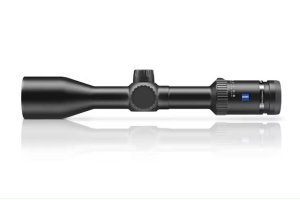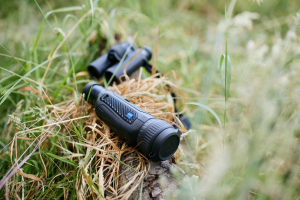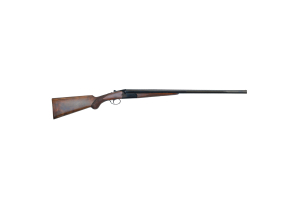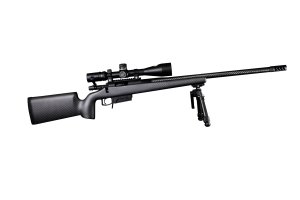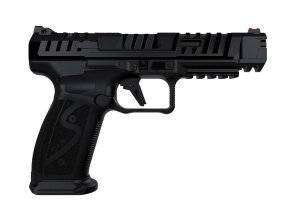
PRODUCT REVIEW - ZEISS Conquest
ZEISS Conquest scope a 'clear' winner, write Con Kapralos
As a provider of consumer goods and especially sports optics, Zeiss continue to redefine their marketplace presence with products designed with a definite purpose in mind. Their current choice of riflescopes is one such line which is constantly upgraded, with the 2022 portfolio featuring some topnotch hunting and tactical optics.
For hunting, their top-tier models in the Conquest V6 and V8 are made in Germany and are cutting-edge for the most astute hunter or shooter. These are expensive but, as a global brand, Zeiss clearly recognises the need for a riflescope line that’s more affordable, hence the Conquest V4, a range made in Japan under licence. Japanese optics manufacturing is without doubt up there with the European giants so the decision by Zeiss to select Japan is purely to make the optic a tad more affordable, though it’s still an ultra-high-quality item.
Outdoor Sporting Agencies, Australia’s Zeiss importer and distributor, carries four models of the Conquest V4 in the 1-4x24, 4-16x44, 6-24x50 and 3-12x56 (all based on a 4x zoom ratio) and sent Australian Shooter the 3-12x56 with illuminated #60 reticle.
The scope arrived in a customary Zeiss white carton displaying specifications and reticle and having tested and reviewed both the Conquest V6 and V8, it would be interesting to see how the V4 would stack up.
At a glance
The review model is made from a single piece of aircraft-grade aluminium with a 30mm main tube diameter, is 368mm long and weighs 610 grams. Capped huntingstyle turrets provide both elevation and windage.
Externally
With a scratch-resistant, hard-wearing matte black finish the aluminium tube is a pre-requisite for a quality riflescope. Starting at the front the 62mm objective bell houses the 56mm objective lens and moving towards the turret housing in the centre, there’s plenty of the 30mm main tube to position scope rings, 40mm forward and 55mm rearwards of the turret housing respectively.
The windage and elevation turrets are varied with external, capped, externallocking windage, ballistic stop and multiturn turrets, the scope fitted with capped hunting-style turrets, perfect in my opinion for a hunting riflescope with simplicity in mind. For users who like to dial turrets the other options will cater to their needs. The dials themselves are one-click for ¼ Minute-of-Angle which equates to 7mm at 100m.
The dials are easily resettable to zero by simply lifting the dial rim and moving the arrow mark to the small dot on the turret body. I used this style of turret on my old Zeiss Duralyts and they’re excellent in every respect. The protective dial caps are made of polymer which serves the purpose of protecting the turrets beneath.
Adjacent to the elevation/windage turrets is the illumination dial which takes a single lithium-ion button battery and provides 10 brightness settings for the red dot in the reticle, with an ‘OFF’ position between each setting. The dial is simple to rotate throughout all settings.
Moving rearwards the ocular housing consists of the diopter focus adjustment, eye-box and power magnification dial with its 3-12x graduated selector ring. The ocular housing is slim at 88mm x 46mm with no awkward bulkiness or appearance, the power magnification dial moving seamlessly from 3x to 12x. A zoom-throw lever is also supplied and can be fitted to the selector ring if required. The eye-box gives a seamless view through the scope and diopter adjustment is carried out using the focus ring at the end of the ocular housing.
Internally
This is where Zeiss engineers excel. Lenses are treated with the T* six-layer multi-coating process which gives unparalleled clarity, contrast and colour from edgeto- edge, with a resultant 90 per cent light transmission. This may not be something most hunters would worry about but for serious deer stalkers who operate in challenging conditions, being able to clearly identify a target animal in lowlight is something directly imparted by the quality of glass and lens coatings.
Exterior lens surfaces are also treated with Zeiss’ LotuTec coatings which repel moisture, dirt and dust for an unblemished image. The reticle is the #60 with illuminated red dot in the second focal plane and consists of two thicker horizontal stadia on the outer with finer cross-hairs in the centre, intersected by another thin crosshair with a thick post on the lower vertical aspect.
The red dot which provides illumination is in the centre where the two thin crosshairs intersect and with the illumination settings can be used either day or night.
Even without the red dot the reticle layout is still perfect for general hunting, devoid of clutter or hold-over marks which seem to dominate too many scopes these days. For those who demand such, Zeiss does offer a choice of other reticles with and without illumination in the Conquest V4 range.
With the reticle in the second focal plane and erector tube housed in the 30mm main tube, this allows for up to 200cm of adjustment (at 100m), more than ample for hunting out to practical distances. The Conquest V4 3-12x56, as with all other models in the V4 line-up, is nitrogen purged, shockproof and waterproof up to 400mbar and carries Zeiss’ Limited
Lifetime Transferrable Warranty and fiveyear No-Fault Policy.
Range and field testing
The scope was concurrently tested atop a Howa M1500 Carbon Elevate rifle in .308 Winchester and optically was excellent during normal range use, all images out to 300m being crisp and clear with full colour rendition and definition. Adjusting point of impact and performing tracking exercises with the hunter-style turrets was exceptional, all adjustments 100 per cent precise and repeatable. Field-of-view at 100m was tremendous, coming in at 12.7m (at 3x) down to 3.2m (at 12x) and 90mm of eye relief is appreciated when shooting a calibre like .308 Winchester or heavier. I didn’t need the illumination during daylight hours as the fine cross-hairs were superb for precise shot placement at targets out to 300m.
In the field the V4 in 3-12x56 was firstrate and excelled in lowlight conditions, the 56mm objective lens being sublime at gathering available light with exit pupil range between 9.2-4.7mm. I had the rifle set at 8x for shooting from a blind in late evening which would have meant an exit pupil of around 7mm, considered the optimum for the human retina.
Making out kangaroos, foxes and the odd hare feeding in diminishing daylight was straightforward though sadly no deer presented for a shot. Having used the V6 and V8 models with 92 and 95 per cent light transmission respectively, there’s a noticeable difference which you’d expect with those higher-level optics, though the V4 certainly holds its own.
Overview
The Conquest V4 is Zeiss’ entry level riflescope line-up and represents outstanding value. Yes it’s made in Japan but that’s never a negative, as optic builders there are considered some of the world’s best. The scope was a joy, certainly one to consider for a varmint or general hunting rifle and shopping around the V4 3-12x56 comes in about the $1200 mark, making it an affordable proposition.
Published by SSAA
June 2023 Australian Shooter, written by Con Kapralos

